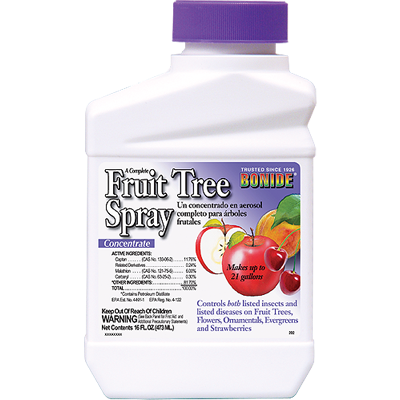Monthly Fruit Tree Orchard Calendar  for Zones 8 through 9:
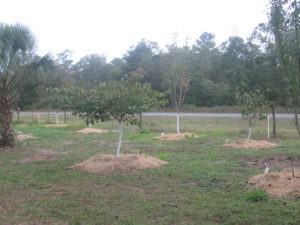 This monthly fruit tree orchard calendar  is meant to be a general guide to many of the common tasks one does to maintain a fruit orchard. Actual spray programs, fertilizing, and pruning times can vary, due to insects, diseases, and the growing conditions which occur in your particular orchard. The products we recommend are organic solutions to common pest and insects. Often these chemicals are not the most effect solutions for harder to kill bugs and fungus. If your issues are not solved using these products, we encourage you to call in or email to talk to our staff. We can help solve more complex problems.
This monthly fruit tree orchard calendar  is meant to be a general guide to many of the common tasks one does to maintain a fruit orchard. Actual spray programs, fertilizing, and pruning times can vary, due to insects, diseases, and the growing conditions which occur in your particular orchard. The products we recommend are organic solutions to common pest and insects. Often these chemicals are not the most effect solutions for harder to kill bugs and fungus. If your issues are not solved using these products, we encourage you to call in or email to talk to our staff. We can help solve more complex problems.
[toggle title_open=”Close Me” title_closed=”JANUARY ” hide=”yes” border=”yes” excerpt_length=”0″ read_more_text=”Read More” read_less_text=”Read Less” include_excerpt_html=”no”]
 January:
- Prune fruits that hold their dormancy well, Grape Vines, Persimmon, Jujube, Mandarin Melonberry, Paw Paw, Quince, Pecan, Chestnut, Ginkgo, and Walnut trees, also Blueberry, Blackberry, Raspberry, Goumi, and Goji Berries. Apply limb spreaders or peg trees to develop more open branching patterns.
- Watch for freezes; protect as needed Citrus, Fig, and young (1 to 2 year) Mulberry, Olive, Loquat, Pomegranate, Banana, and Japanese Raisin trees.
- Best time to plant fruit trees if you don’t have a good watering schedule.
- Apply solution #1a on peach, plum, nectarine and apples if Plum Curculio is an issue
- Harvest citrus and pecans
[/toggle]
[toggle title_open=”Close Me” title_closed=”FEBRUARY ” hide=”yes” border=”yes” excerpt_length=”0″ read_more_text=”Read More” read_less_text=”Read Less” include_excerpt_html=”no”]
February:
- In late February fertilize all fruit trees. On all trees except blueberries and citrus, apply a layer of manure or compost under the tree canopy to build organic content in your soil. Mulch under tree canopy to suppress grass and weeds. The best mulch material is “Bermuda†weed free hay. Mulch blueberries with pine bark or leaves. Keep a 6 inch “No Mulch†zone around the trunks of trees to avoid trunk rots.Â
- In late February, prune fruit trees that bloom early and could be damaged by a late freeze: Apple, Peach, Nectarine, Plum, Mayhaw, Mulberry, and Pear. Apply limb spreaders or peg trees to develop more open branching patterns.
- Watch for freezes; protect as needed Citrus, Fig, and young (1 to 2 year) Mulberry, Olive, Loquat, Pomegranate, Banana, and Japanese Raisin trees.
- If Plum Curculio  (Worms in your fruit) is a problem on Peach, Plum, Nectarine, and Apple trees, see SOLUTION #1
- Best time to plant fruit trees if you don’t have a good watering schedule.
- Harvest citrus
[/toggle]
[toggle title_open=”Close Me” title_closed=”MARCH ” hide=”yes” border=”yes” excerpt_length=”0″ read_more_text=”Read More” read_less_text=”Read Less” include_excerpt_html=”no”]
March:Â Â Â Â Â Â Â Â Â Â Â Â Â Â Â Â Â Â Â Â Â Â Â Â Â Â Â Â Â Â Â Â Â Â Â Â Â Â Â Â Â Â Â Â Â Â Â Â Â Â Â Â Â Â Â Â Â Â Â Â Â Â Â Â Â Â Â Â
- Prune fruit trees that are subject to winter damage after new growth emerges, so that you can see where to make the cuts. Kiwi Vines, Sherbet Berry, Citrus, Pomegranate, Olive, Banana, Papaya, and Fig trees.
- Begin training young fruit trees as new growth emerges. Apply limb spreaders or peg trees to develop more open branching patterns.
- Watch for freezes; protect as needed Citrus, Fig, and young (1 to 2 year) Mulberry, Olive, Loquat, Pomegranate, Banana, and Japanese Raisin trees.
- If Plum Curculio (Worms in your fruit) Â is a problem on Peach, Plum, Nectarine, and Apple trees, see SOLUTION #1
- If Insects are a problem on any of the fruit trees see SOLUTION #2
- If Fruit Rot or Leaf Spot are a problem on Apple, Pear, Mayhaw, Pomegranate, and Fig trees, see SOLUTION #3A
- If Fruit Rot, Leaf Spot or Insects are a problem on Peach, Plum, and Nectarine trees, see SOLUTION #3B
- If Citrus Leaf Miner is a problem on young (1-3 year old) Citrus trees, see SOLUTION #4
- For outbreaks of Caterpillars on any of the fruit trees, see SOLUTION #5
- Till-in winter cover crop when it is at peak flower.
- Plant fruit trees. Spring and summer months are the best time to plant fruits that are tender to cold weather, Kiwi Vines, Sherbet Berry, Citrus, Pomegranate, Olive, Banana, Papaya, and Fig trees. By planting in the warmer months, the trees will have a chance to become established, and develop a good root system before winter, which will increase their odds of surviving a freeze.
- Harvest strawberries loquat and citrus
[/toggle]
[toggle title_open=”Close Me” title_closed=”APRIL ” hide=”yes” border=”yes” excerpt_length=”0″ read_more_text=”Read More” read_less_text=”Read Less” include_excerpt_html=”no”]
April:
- Continue to train young trees and prune to hold height on older trees. Apply limb spreaders or peg trees to develop more open branching patterns.
- If Plum Curculio  (Worms in your fruit) is a problem on Peach, Plum, Nectarine, and Apple trees, see SOLUTION #1
- If Insects are a problem on any of the fruit trees, see SOLUTION #2
- If Fruit Rot or Leaf Spot are a problem on Apple, Pear, Mayhaw, Pomegranate, and Fig trees, see SOLUTION #3A
- If Fruit Rot, Leaf Spot or Insects are a problem on Peach, Plum, and Nectarine trees, see SOLUTION #3B
- If Citrus Leaf Miner is a problem on young 1-3 year old Citrus trees, see SOLUTION #4
- For outbreaks of Caterpillars on any of the fruit trees, see SOLUTION #5
- Plant summer cover crops, like Brown Top Millet and Cow Peas, to build organic content in soil and suppress weeds.
- Plant fruit trees. Spring and summer months are the best time to plant fruits that are tender to cold weather, Kiwi Vines, Sherbet Berry, Citrus, Pomegranate, Olive, Banana, Papaya, and Fig trees. By planting in the warmer months, the trees will have a chance to become established, and develop a good root system before winter, which will increase their odds of surviving a freeze.
- Harvest loquat and strawberriesÂ
[/toggle]
[toggle title_open=”Close Me” title_closed=”MAY ” hide=”yes” border=”yes” excerpt_length=”0″ read_more_text=”Read More” read_less_text=”Read Less” include_excerpt_html=”no”]
May:Â
- Fertilize all fruit trees in late May.
- Continue summer pruning to train young trees and hold height on older trees. Apply limb spreaders or peg trees to develop more open branching patterns.
- If Plum Curculio  (Worms in your fruit) is a problem on Peach, Plum, Nectarine, and Apple trees, see SOLUTION #1
- If Insects are a problem on any of the fruit trees, see SOLUTION #2
- If Fruit Rot or Leaf Spot are a problem on Apple, Pear, Mayhaw, Pomegranate, and Fig trees, see SOLUTION #3A
- If Fruit Rot, Leaf Spot or Insects are a problem on Peach, Plum, and Nectarine trees, see SOLUTION #3B
- If Citrus Leaf Miner is a problem on young 1-3 year old Citrus trees, see SOLUTION #4
- For outbreaks of Caterpillars on any of the fruit trees, see SOLUTION #5
- Plant fruit trees. Spring and summer months are the best time to plant fruits that are tender to cold weather, Kiwi Vines, Sherbet Berry, Citrus, Pomegranate, Olive, Banana, Papaya, and Fig trees. By planting in the warmer months, the trees will have a chance to become established, and develop a good root system before winter, which will increase their odds of surviving a freeze.
- Harvest blackberry, blueberry, goumi, mulberry, mayhaw, nectarine, peach, plum and strawberry
[/toggle]
[toggle title_open=”Close Me” title_closed=”JUNE ” hide=”yes” border=”yes” excerpt_length=”0″ read_more_text=”Read More” read_less_text=”Read Less” include_excerpt_html=”no”]
June:Â
- Prune evergreen fruit trees like Citrus, Pineapple Guava, and Loquat to control height.
- Continue summer pruning to train young trees and hold height on older trees. Apply limb spreaders or peg trees to develop more open branching patterns.
- If Plum Curculio  (Worms in your fruit) is a problem on Peach, Plum, Nectarine, and Apple trees, see SOLUTION #1
- If Insects are a problem on any of the fruit trees, see SOLUTION #2
- If Fruit Rot or Leaf Spot are a problem on Apple, Pear, Mayhaw, Pomegranate, and Fig trees, see SOLUTION #3A
- If Fruit Rot, Leaf Spot or Insects are a problem on Peach, Plum, and Nectarine trees, see SOLUTION #3B
- If Citrus Leaf Miner is a problem on young 1-3 year old Citrus trees, see SOLUTION #4
- For outbreaks of Caterpillars on any of the fruit trees, see SOLUTION #5
- Plant summer cover crop to maintain healthy soil and build organic matter. Plant Brown Top Millet and Cow Peas.
- Plant fruit trees. Spring and summer months are the best time to plant fruits that are tender to cold weather, Kiwi Vines, Sherbet Berry, Citrus, Pomegranate, Olive, Banana, Papaya, and Fig trees. By planting in the warmer months, the trees will have a chance to become established, and develop a good root system before winter, which will increase their odds of surviving a freeze.
- Harvest apple, blackberry, blueberries, boysenberry, fig, mulberry, nectarine, peach, plum and strawberry
[/toggle]
[toggle title_open=”Close Me” title_closed=”JULY ” hide=”yes” border=”yes” excerpt_length=”0″ read_more_text=”Read More” read_less_text=”Read Less” include_excerpt_html=”no”]
July:Â
- In late July fertilize all fruit trees. Reapply a layer of manure or compost on all fruit trees, except Citrus or Blueberry plants, under the tree canopy to build organic content in your soil. Mulch under tree canopy to suppress grass and weeds.
- Continue summer pruning to train young trees and hold height on older trees. Apply limb spreaders or peg trees to develop more open branching patterns.
- If Plum Curculio  (Worms in your fruit) is a problem on Peach, Plum, Nectarine, and Apple trees, see SOLUTION #1
- If Insects are a problem on any of the fruit trees, see SOLUTION #2
- If Fruit Rot or Leaf Spot are a problem on Apple, Pear, Mayhaw, Pomegranate, and Fig  trees, see SOLUTION #3A
- If Fruit Rot, Leaf Spot or Insects are a problem on Peach, Plum, and Nectarine trees, see SOLUTION #3B
- If Citrus Leaf Miner is a problem on young (1-3 year old) Citrus trees, see SOLUTION #4
- For outbreaks of Caterpillars on any of the fruit trees, see SOLUTION #5
- If trunk borers are a problem on Peach, Plum, Nectarine, and Apple trees, see SOLUTION #6
- Plant fruit trees. Spring and summer months are the best time to plant fruits that are tender to cold weather, Kiwi Vines, Sherbet Berry, Citrus, Pomegranate, Olive, Banana, Papaya, and Fig trees. By planting in the warmer months, the trees will have a chance to become established, and develop a good root system before winter, which will increase their odds of surviving a freeze.
- Harvest apple, blueberry, elderberry, figs, bunch grapes, mulberry, peach, pear, and plum
[/toggle]
[toggle title_open=”Close Me” title_closed=”AUGUST ” hide=”yes” border=”yes” excerpt_length=”0″ read_more_text=”Read More” read_less_text=”Read Less” include_excerpt_html=”no”]
August:Â
- If Plum Curculio (Worms in your fruit) is a problem on Peach, Plum, Nectarine, and Apple trees, see SOLUTION #1
- If Insects are a problem on any of the fruit trees, see SOLUTION #2
- If Fruit Rot or Leaf Spot are a problem on Apple, Pear, Mayhaw, Pomegranate, and Fig trees, see SOLUTION #3A
- If Fruit Rot, Leaf Spot or Insects are a problem on Peach, Plum, and Nectarine trees, see SOLUTION #3B
- If Citrus Leaf Miner is a problem on young (1-3 year old) Citrus trees, see SOLUTION #4
- For outbreaks of Caterpillars on any of the fruit trees, see  SOLUTION #5
- If trunk borers are a problem on Peach, Plum, Nectarine, and Apple trees, see SOLUTION #6
- Plant fruit trees. Spring and summer months are the best time to plant fruits that are tender to cold weather, Kiwi Vines, Sherbet Berry, Citrus, Pomegranate, Olive, Banana, Papaya, and Fig trees. By planting in the warmer months, the trees will have a chance to become established, and develop a good root system before winter, which will increase their odds of surviving a freeze.
- Harvest figs, muscadine grapes, papaya, pears,Â
[/toggle]
[toggle title_open=”Close Me” title_closed=”SEPTEMBER ” hide=”yes” border=”yes” excerpt_length=”0″ read_more_text=”Read More” read_less_text=”Read Less” include_excerpt_html=”no”]
September:Â
- If Plum Curculio  (Worms in your fruit) is a problem on Peach, Plum, Nectarine, and Apple trees, see SOLUTION #1
- If Insects are a problem on any of the fruit trees, see SOLUTION #2
- If Fruit Rot or Leaf Spot are a problem on Apple, Pear, Mayhaw, Pomegranate, and Fig trees, see SOLUTION #3A
- If Fruit Rot, Leaf Spot or Insects are a problem on Peach, Plum, and Nectarine trees, see SOLUTION #3B
- If Citrus Leaf Miner is a problem on young (1-3 year old) Citrus trees, see SOLUTION #4
- For outbreaks of Caterpillars on any of the fruit trees, see SOLUTION #5
- If trunk borers are a problem on Peach, Plum, Nectarine, and Apple trees, see SOLUTION #6
- Best time to plant fruit trees if you don’t have a good watering schedule.
- Harvest banana, chestnut, citrus, crabapple, figs, muscadine grapes, jujube, kiwi, olive, papaya, paw paw, pears, persimmon, pineapple, pineapple guava, pomegranate, quince, raisen tree and black walnuts
[/toggle]
[toggle title_open=”Close Me” title_closed=”OCTOBER ” hide=”yes” border=”yes” excerpt_length=”0″ read_more_text=”Read More” read_less_text=”Read Less” include_excerpt_html=”no”]
October:
- Build cages for freeze-protection of Citrus and young (1 to 2 year old) Mulberry, Fig, Olive, Loquat, Pomegranate, Loquat, Banana and Japanese Raisin trees.
- Paint trunks and lower limbs to prevent Sun Scald injury on Kiwi vines, Apple, Pear, Peach, Plum, Nectarine, Fig, Loquat, Mayhaw, Mulberry, Persimmon, Quince, Pecan, and Chestnut trees. Use a 50/50 mix of white interior latex paint and water.
- Watch for freezes; protect as needed Citrus, Fig, and young (1 to 2 year old) Mulberry, Olive, Loquat, Pomegranate, Banana and Japanese Raisin trees.
- Plant cover crops throughout the orchard to build healthy soil and good organic content. Â Plant a mixture of Clover, Vetch, Mustards, Iron Peas and Cereal or Winter Rye.
- Best time to plant fruit trees if you don’t have a good watering schedule.
- Harvest banana, chestnut, citrus, figs, muscadine grapes, jujube, olives, papaya, pecan, persimmon, pineapple, pineapple guava, pomegranate, quince and black walnut
[/toggle]
[toggle title_open=”Close Me” title_closed=”NOVEMBER ” hide=”yes” border=”yes” excerpt_length=”0″ read_more_text=”Read More” read_less_text=”Read Less” include_excerpt_html=”no”]
November:
- Watch for freezes; protect as needed Citrus, Fig and young (1 to 2 year old) Mulberry, Olive, Loquat, Pomegranate, Banana and Japanese Raisin trees.
- Best time to plant fruit trees if you don’t have a good watering schedule.Â
- Harvest citrus, pecans, persimmon, pineapple guava,Â
[/toggle]
[toggle title_open=”Close Me” title_closed=”DECEMBER ” hide=”yes” border=”yes” excerpt_length=”0″ read_more_text=”Read More” read_less_text=”Read Less” include_excerpt_html=”no”]
December:Â
- Watch for freezes; protect as needed Citrus, Fig and young (1 to 2 year old) Mulberry, Olive, Loquat, Pomegranate, Banana and Japanese Raisin trees.
- Winter Clean up Spray. After leaves drop, apply SOLUTION #7 on Kiwi Vine, Apple, Pear, Peach, Nectarine, Plum, Mulberry, Quince, and Paw Paw trees.
- Best time to plant fruit trees if you don’t have a good watering schedule
- Harvest citrus, pecans and persimmons
[/toggle]
Organic Solutions to Fruit Tree Sprays
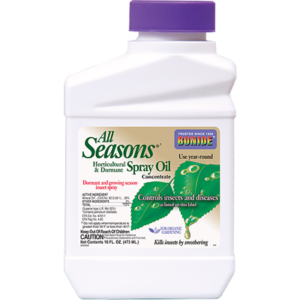 SOLUTION #1:  If Plum Curculio  (Worms in your fruit) is a problem on Peach, Plum, Nectarine, and Apple trees. Begin spraying at flower petal fall with Surround a refined Kaolin Clay. You will need to build up and maintain a sufficient coating of this product on the newly emerging fruit to deter Plum Curculio. It usually takes two coats sprayed 7 days apart after flower petals drop to build up a good coat, spray thoroughly. During fruit season it will be necessary to maintain the coating on fruit as it continues to swell, spray as needed. When leaves lose their white appearance, or film appears thin on fruit, reapply. Fruit will have a white residue that will need to be washed off at harvest, this is not a toxic spray it just looks bad.
SOLUTION #1:  If Plum Curculio  (Worms in your fruit) is a problem on Peach, Plum, Nectarine, and Apple trees. Begin spraying at flower petal fall with Surround a refined Kaolin Clay. You will need to build up and maintain a sufficient coating of this product on the newly emerging fruit to deter Plum Curculio. It usually takes two coats sprayed 7 days apart after flower petals drop to build up a good coat, spray thoroughly. During fruit season it will be necessary to maintain the coating on fruit as it continues to swell, spray as needed. When leaves lose their white appearance, or film appears thin on fruit, reapply. Fruit will have a white residue that will need to be washed off at harvest, this is not a toxic spray it just looks bad.- SOLUTION #1a To deter Plum Curculio on peach, plum, nectarine apple and pear, use a mix of Surround /Neem to begin the spray season, spray before bud break. Spray evenly and thoroughly cover all pasts of dormant tree.
-  SOLUTION #2:  If Insects are a problem on any of the fruit trees apply Fish Emulsion mixed with Neem every 7 to 10 days until symptoms disappear. Alternate every other spray with Insecticidal Soap mixed with Spinosad spray, to prevent the buildup of chemical resistance in the insects and diseases that you are dealing with. If it rains you’ll need to reapply the mix.
- SOLUTION #3A:  If Fruit Rot or Leaf Spot are a problem on Apples, Pears Mayhaw, Pomegranate, and Fig trees apply Copper Spray every 7 to 10 days until symptoms disappear. Alternate every other spray with Sulfur mixed with Refined Kaolin Clay spray, to prevent the buildup of chemical resistance in the insects and diseases that you are dealing with. If it rains you’ll need to reapply the mix.
- SOLUTION #3B:  If Fruit Rot or Leaf Spot are a problem on Peach, Plum, and Nectarine trees apply Sulfur mixed with Refined Kaolin Clay spray every two weeks until harvest or leaf spot goes away. Alternate every other spray with Fish Emulsion mixed with Neem spray to prevent the buildup of chemical resistance in the insects and diseases that you are dealing with. If it rains you’ll need to reapply the mix.
- SOLUTION #4: Â If Citrus Leaf Miner is a problem on young 1-3 year old Citrus trees. Apply Spinosad mixed with All Seasons Oil when new flushes of growth are 2-3 inches long and again when flush is 6-8 inches long. Alternate every other spray with Neem and All Season oil to prevent the buildup of chemical resistance in the insects and diseases that you are dealing with. This solution is also used to control whiteflys through out the year.
- SOLUTION #5: Â For outbreaks of Caterpillars on any of the fruit trees use BT bacillus thuringiensis spray as soon as you spot the problem. Reapply every 3 or 4 days until caterpillars disappear
- SOLUTION #6: Â If trunk borers are a problem on Peach, Plum, Nectarine, and Apple trees apply Spinosad to trunks and lower limbs. Soak bark thoroughly.
-  SOLUTION #7:  As a good preventive against next year disease and insect problems, it’s a good idea to apply a Dormant Oil spray. Do this as soon as the leaves drop on Kiwi Vine, Apple, Pear, Peach, Nectarine, Plum, Mulberry, Quince, and Paw Paw trees.
Tips for a Good Spray Program
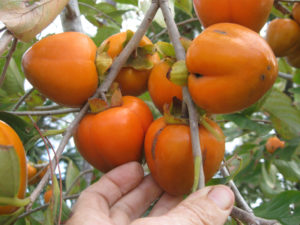 Read and follow all manufacturer’s instructions and warnings.
Read and follow all manufacturer’s instructions and warnings.- Always wear protective clothing and a respirator when handling chemicals.
- I know these sounds like a no brainer, but read the directions on the bottle. We haven’t written instructions on spray formulas because chemical come in different strengths. Follow the instructions on the bottle to make up your formula. We often recommend that you mix two chemicals together. This will give you a spray that will kill bugs and fungus at the same time. The recommendations are for chemicals that are compatible when mixed together. Use at the strength recommended for each chemical, listed on the label.
- Never use herbicides in sprayers used for disease and pest control. The herbicide residue in the sprayer will kill your plant.
- Do not apply Sulfur, Insecticidal Soap, Oil or other sprays when temperature is below 40ºF or above 90º F.Â
- Never spray insecticides when trees are in bloom. You will kill your pollinators!
- Spray thoroughly to cover all parts of the tree, undersides as well as tops of leaves. Spray until a noticeable amount begins to drip from the tree.
- Remember that rain or over head irrigation will wash your chemical off, reapply after.
- Work to keep your tree foliage dry, use micro sprinkler system or low angle nozzles to irrigate your trees, and reapply chemical after a rain.
- Keep mixtures shaken or stirred during use, so that chemicals do not settle out.
- Mix fresh spray for each application. Add chemicals to a little water in a small container and stir well. Strain the mixture through a screen before pouring always and use clean water, to prevent your sprayer from clogging.
- Safely discard leftover spray mixtures; never save to use next time.
- Rotate the chemical you use to keep the pests from developing resistance to the chemical you are using.
- Always clean spray equipment immediately after use.
Sanitation in the Orchard
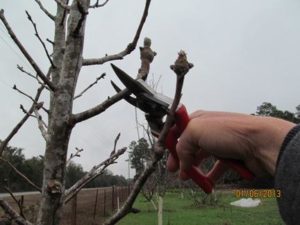 Prune out and destroy all dead and diseased branches as soon as possible.
Prune out and destroy all dead and diseased branches as soon as possible.- Gather and destroy spoiled fruit daily.
- Keep pathways mowed.
- Keep pruners and saws sharp and clean
- Apply new mulch each year under the trees to bury Fruit Rot spores.
Sterilize pruning shears and saws between each tree. Use one of the following:
- – Household bleach: 25% solution (1 part bleach + 3 parts water)
- – Rubbing alcohol (70% isopropyl): 50% solution (1 part alcohol + 1 part water)
- Â Soak tools for 5 minutes and rinse with clean water.

